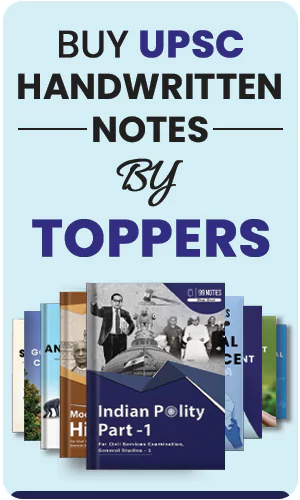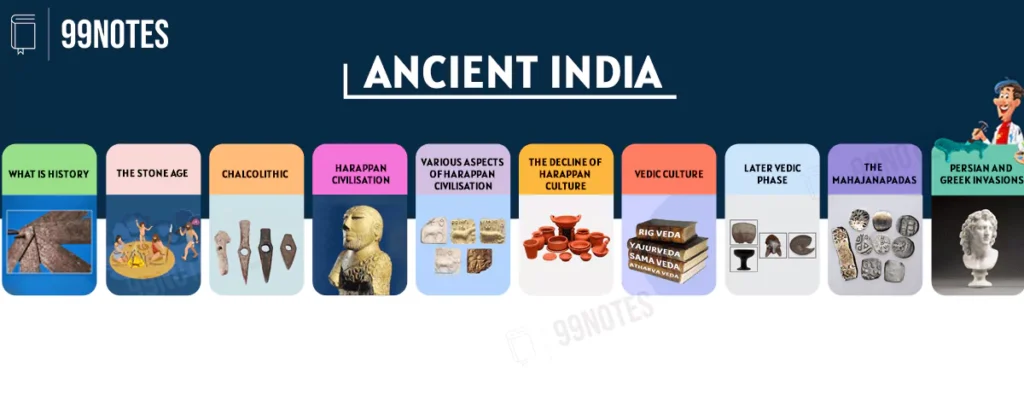
Ancient History Notes- Complete Notes for UPSC, Free Download
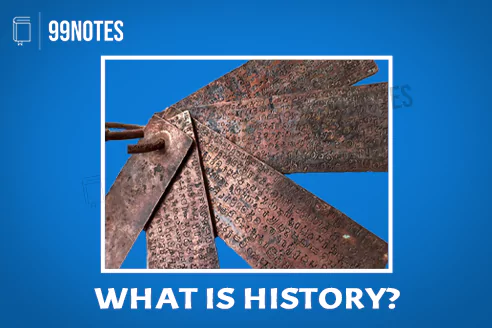
What Is History
The word history is derived from the ancient Greek word ‘Historia’, which translates into ‘an inquiry. Thus the knowledge acquired by the investigation of the events of the past is history. In simple terms, it is the enquiry of the ‘human past’.
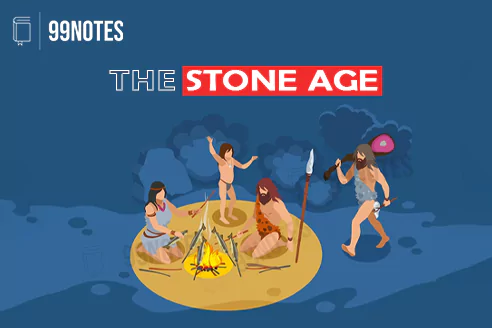
The Stone Age
The Stone age refers to the prehistoric period during which stone tools were the most prevalent form of articles used by early man. The use of stone tools started about 2.5 million years ago with the arrival of the early humans (Homo Habilis)
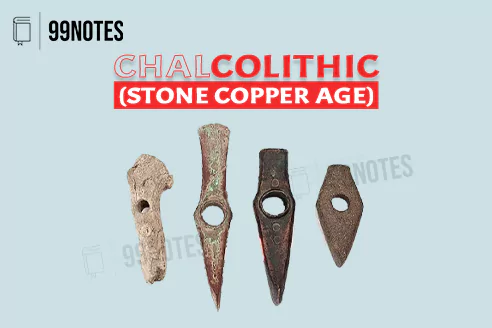
Chalcolithic (Stone Copper Age)
Chalcolithic is made from two Greek words, khalkos and lithos, meaning copper and stone, respectively. It dates from 6,500 years ago to around 2500 years ago. This marks the beginning of the use of metalwork technology. For the first time, people started using metals along with stone tools.
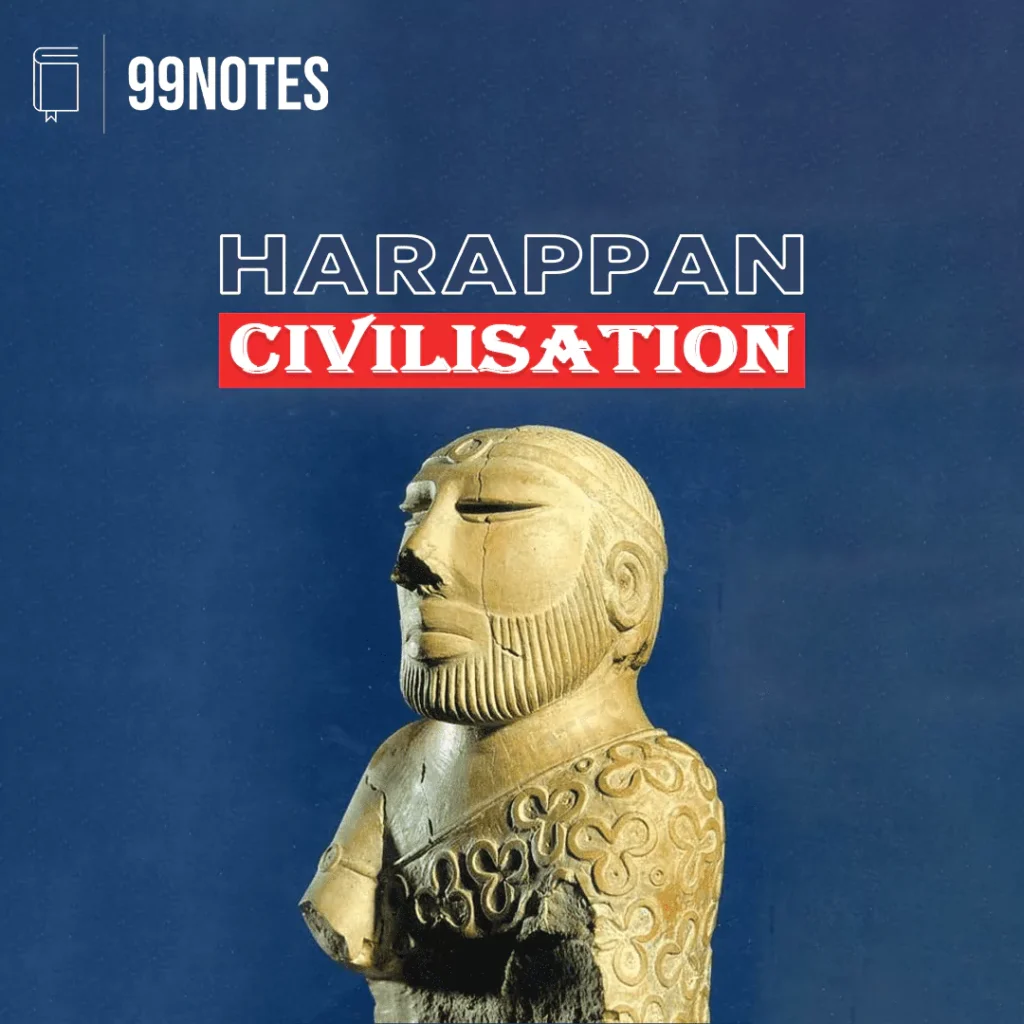
Harappan Civilisation (3300BCE- 1300BCE)
Harappan civilisation was the first urban culture in the Indian subcontinent. It was a bronze age culture that flourished in the Northwestern Indian subcontinent. It was earlier known as the Indus valley civilisation as most sites discovered were near the Indus valley river system.
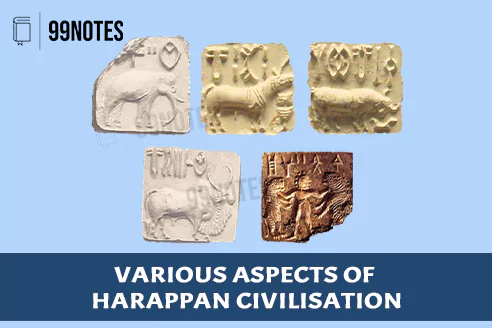
Various aspects of Harappan Civilisation
Town Planning Harappan civilisation features very impressive and very well-planned structures of the towns.
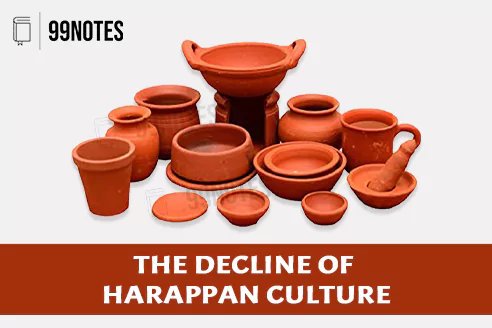
The decline of Harappan culture
Around 1900BCE, cities like Harappa, Mohenjodaro and Kalibangan experienced a gradual decline. This era is referred to as the Late Harappan period.

Vedic Culture
The Vedic civilisation started with the advent of the Aryans in around 1500 BC, which coincided with the Late Harappan period (associated with the decline of the Indus valley civilisation). Aryans spoke Sanskrit, which is considered the origin of most of the current languages of the Indian subcontinent
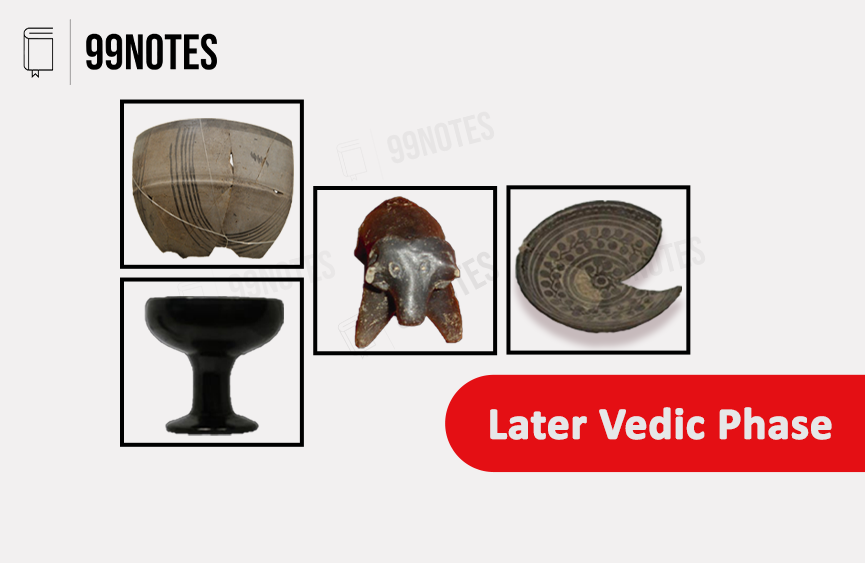
Later Vedic Phase
The later Vedic period extended roughly from 1000 B.C. to 600 B.C., during which some Vedic tribes had migrated from the ‘Sapta Sindhu’ region to the upper Ganga Valley and other adjacent areas. The history of the later Vedic phase is based primarily on Vedic texts, which were compiled after the age of Rigveda.
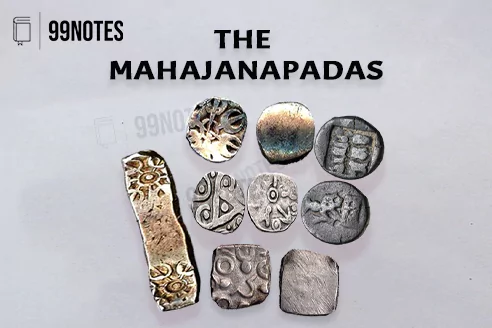
The Mahajanapadas
‘Janapada’ (spelt as Janpad) comes from the Sanskrit root Jana meaning a tribe, and pada meaning feet. Thus, ‘Janapada’ means the area where the people of the ‘Jana’ tribe set their foot.

Persian and Greek Invasions
In the 6th century BCE, India’s northwest was a site of conflict between various principalities. Kambojas, Gandharas and Madras fought with each other.
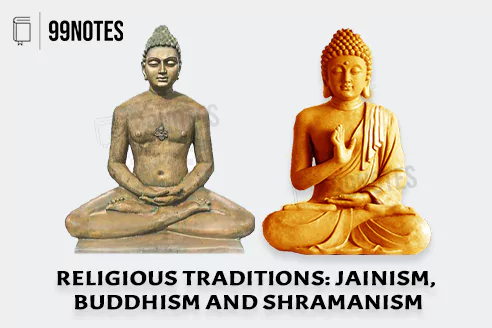
Religious Traditions: Jainism, Buddhism And Shramanism
In the post-Vedic period, a significant change occurred in the nature of Religious practices in India. We see the emergence of new religious movements such as Jainism and Buddhism, which impacted society, the polity and the administration for centuries to come.
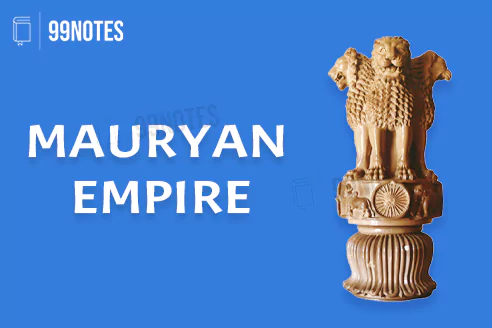
Mauryan Empire(321BC-185BC)
Under the Nanda dynasty rule (343BC to 321BC), Magadha was a formidable power during Alexander’s invasion (326BC). But the Magadh reached its peak during the Mauryan empire. First time in the history of India, a large part of the Indian subcontinent, extending up to the far northwest.
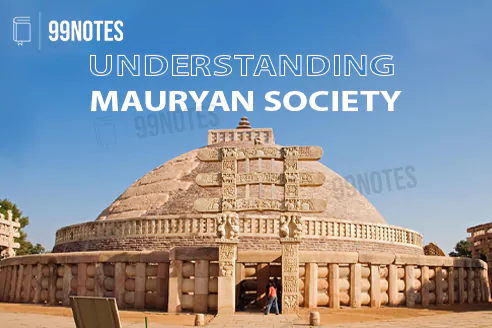
Understanding Mauryan society
Indica wrongly identifies that society was divided into seven distinct groups (genos) – philosophers, cultivators, hunters and herders, artisans and traders, overseers (spies) and the king’s counsellors. More relevant sources indicate that society was based on endogamous Varnas.
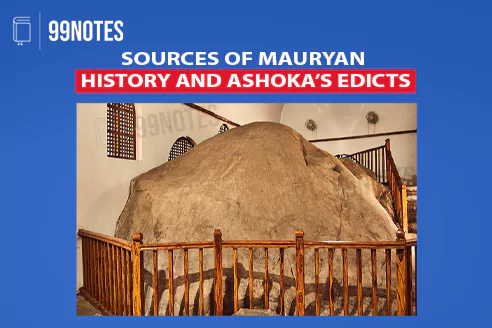
Sources of Mauryan History and Ashoka’s Edicts
We have several sources that help us to reconstruct the Mauryan empire. These can be classified as either literary sources or Archaeological sources.

Post Mauryan Age
The period from 200 BCE onwards is known as Post-Mauryan Age. It did not witness a large empire like the Mauryas but is known for its intimate contact between Central Asia and India.

Megalith and Sangam Age
The History of South India in the Iron Age is marked by the Megalithic burials and the Sangam literature. We can recreate the history of this era with the aid of these burial sites and the Sangam literature.
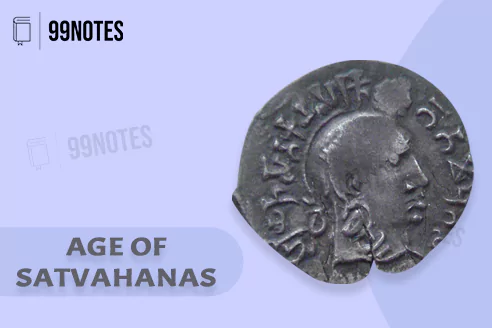
Age of Satvahanas
Satvahanas succeeded the Mauryan Empire in Deccan and Central India. They are considered to be identical to Andhras mentioned in Puranas. However, the word ‘Andhra’ does not appear in the Satvahana inscriptions.
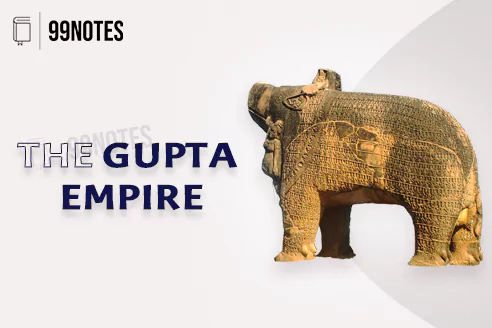
The Gupta Empire (from 240AD to 455AD)
The Kushanas and the Satvahanas became weaker in the middle of the 3rd century after providing 200-year-long political and economic stability.

India during its Golden Age
The Gupta Age was a Golden age of Economy, Literature, Science, Mathematics, Astronomy and Art, even though it was in no sense a Golden age for the untouchables, slaves and women.
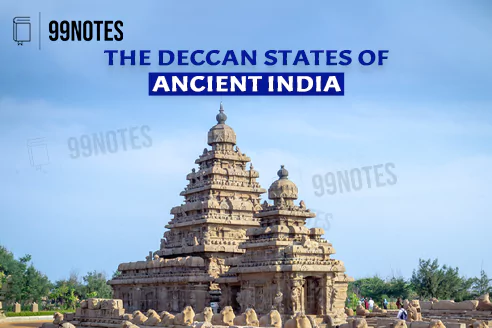
The Deccan states of Ancient India (300-750 AD)
Several small powers emerged in the south in quick succession. The Ikshavakus and Abhiras rose on the power vacuum left after the fall of Satvahanas. However, their rule quickly fell, and in its place, a powerful Chalukyan dynasty emerged.
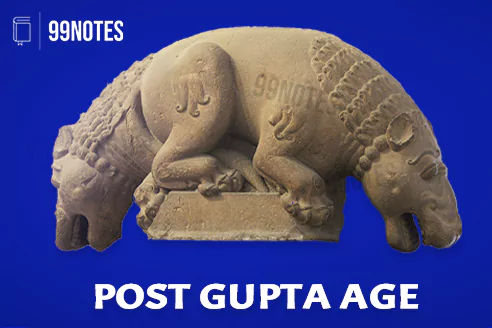
The Post Gupta Age
In 528CE, a consortium of North Indian kings defeated the Hunas, after which they were pushed back to Kashmir, Punjab and western India. Mandsaur Pillar inscription by a Hindu king, Yashodharman, mentions this Battle of Sondani. In this conquest, the Guptas played only a minor role.
- Ancient History Notes- Complete Notes for UPSC, Free Download
- What Is History
- The Stone Age
- Chalcolithic (Stone Copper Age)
- Harappan Civilisation (3300BCE- 1300BCE)
- Various aspects of Harappan Civilisation
- The decline of Harappan culture
- Vedic Culture
- Later Vedic Phase
- The Mahajanapadas
- Persian and Greek Invasions
- Religious Traditions: Jainism, Buddhism And Shramanism
- Mauryan Empire(321BC-185BC)
- Understanding Mauryan society
- Sources of Mauryan History and Ashoka's Edicts
- Post Mauryan Age
- Megalith and Sangam Age
- Age of Satvahanas
- The Gupta Empire (from 240AD to 455AD)
- India during its Golden Age
- The Deccan states of Ancient India (300-750 AD)
- The Post Gupta Age
More About Ancient India
Ancient India is an important part of the history of the Indian subcontinent, and understanding its history and culture is crucial for UPSC CSE preparation. Here are a few reasons why:
1. Ancient India is an important part of the syllabus for the UPSC CSE exam, and a good understanding of ancient India can help you score well in the exam.
2. Ancient India played a significant role in the development of the cultural and intellectual traditions of modern India, and understanding ancient India can help you understand the present-day context of India.
3. Ancient India made significant contributions to the world in the fields of art, literature, science, and philosophy, and understanding these contributions can help you understand India’s place in the world.
4. Ancient India’s history is closely linked to the history of the Indian subcontinent as a whole, and understanding ancient India can provide a deeper understanding of the region’s past and present.
Ancient India refers to the history of the Indian subcontinent from the earliest civilizations to the end of the Mughal Empire in the early modern period. The ancient history of India is divided into several periods, including the Indus Valley Civilization (3300 BCE – 1300 BCE), the Vedic Period (1500 BCE – 500 BCE), the Maurya Empire (321 BCE – 185 BCE), and the Gupta Empire (320 CE – 550 CE).
The Indus Valley Civilization was one of the earliest and most advanced civilizations in the world, with major cities such as Harappa and Mohenjo-daro. The Indus Valley Civilization was characterized by its sophisticated urban planning, advanced technology, and diverse cultural practices.
The Vedic Period saw the emergence of the Vedas, the oldest sacred texts of Hinduism, and the development of Hinduism as a religion. The Maurya Empire, under the rule of Emperor Ashoka, was a period of great political and cultural achievements. Ashoka is known for his policies of non-violence and religious tolerance, and his contributions to the spread of Buddhism.
The Gupta Empire, which followed the Maurya Empire, was a period of great cultural and scientific achievements. The Gupta Empire is known for its advances in mathematics, science, and literature, and for its achievements in art and architecture.
Foreign invasions also played a significant role in ancient India’s history. Alexander the Great invaded India in the 4th century BCE, and the Mughal Empire, which was founded by the Central Asian ruler Babur in the early 16th century, ruled much of India for over three centuries.
Overall, ancient India made significant contributions to the world in the fields of art, literature, science, and philosophy. Its legacy can still be seen in the cultural and intellectual traditions of modern India.
Ancient History Notes: Key Civilizations & Events
Ancient history notes provide a detailed understanding of early civilizations, empires, and cultural developments that shaped human society. Covering topics like the Indus Valley Civilization, Mesopotamia, ancient Egypt, Greece, Rome, and early Indian dynasties.
They are essential for competitive exams like UPSC, offering concise yet comprehensive insights into the origins of civilization, governance, economy, and technological advancements of ancient times.

